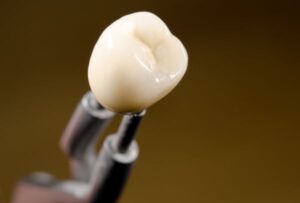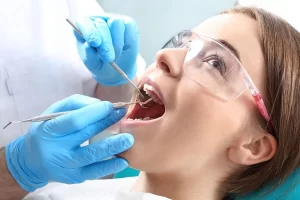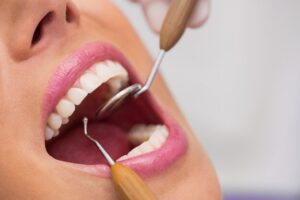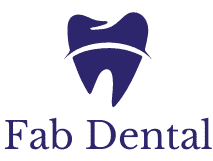When it comes to rectifying crooked teeth, the name that often springs to mind is Invisalign—a modern solution that promises a less visible, more comfortable orthodontic treatment. This blog post aims to explore the effectiveness of Invisalign for straightening misaligned teeth, comparing it to traditional braces, and delving into its success rate and patient satisfaction levels.
Invisalign has revolutionized the field of orthodontics by offering clear braces, a welcome alternative for those who are conscious about the aesthetics of metal braces. But how effective is Invisalign, really? We’ll investigate the benefits of Invisalign for teeth alignment, discuss the typical Invisalign treatment duration, and consider its suitability for adults. By the end of this post, you should have a comprehensive understanding of why Invisalign might be the orthodontic treatment you’re looking for to achieve that perfect smile.
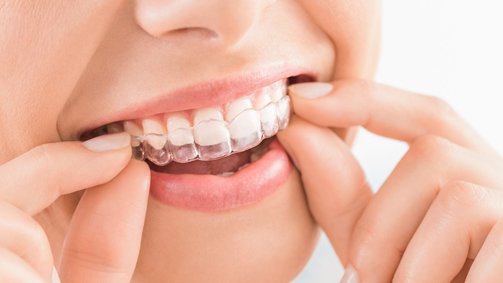
Understanding Invisalign: The Basics
Invisalign has revolutionized the orthodontic world by offering an almost invisible solution to crooked teeth. Unlike traditional braces, Invisalign aligners are clear, removable, and custom-made to fit snugly over your teeth. The technology behind these aligners employs a series of these clear braces, each designed to make slight adjustments to the position of your teeth over time. This process, known as teeth alignment, is both aesthetic and functional, improving not only the look of your smile but also your overall dental health.
The effectiveness of Invisalign for straightening teeth is a result of its innovative approach to orthodontic treatment. Using 3D imaging technology, Invisalign creates a step-by-step plan for your teeth’s movement, allowing you to visualize the end result even before the treatment begins. The success rate of Invisalign for crooked teeth can be comparable to traditional braces, with the added benefits of improved comfort and convenience. Patients often report high satisfaction with Invisalign for tooth correction due to its discreet nature and the flexibility it offers in their daily lives.
As with any orthodontic procedure, the Invisalign results for misaligned teeth depend on the individual case. However, many adults with crooked teeth have found Invisalign to be an effective solution, particularly those who are concerned about the aesthetics of traditional braces. In terms of Invisalign treatment duration for teeth straightening, it varies per patient but typically ranges from 12 to 18 months. Throughout the treatment, you’ll witness the transformation of your smile, reaffirming the benefits of Invisalign for teeth alignment and its standing as a modern alternative to conventional orthodontic methods.
Assessing the Effectiveness of Invisalign
When considering orthodontic treatment for crooked teeth, Invisalign is often a popular choice due to its clear and less noticeable braces. But how effective is Invisalign in achieving a perfectly aligned smile? To answer this question, let’s delve into various cases and factors that influence the outcome of using Invisalign for teeth straightening.
Invisalign Results for Misaligned Teeth: Numerous studies have demonstrated that Invisalign is highly effective for correcting a wide range of misalignments. Patients report significant improvements in the alignment of their teeth, often achieving their desired results with less discomfort compared to traditional braces.
Invisalign Effectiveness for Straightening Teeth: The success rate of Invisalign for straightening teeth is comparable to that of traditional braces. However, the level of effectiveness can vary depending on the severity of the crooked teeth and the patient’s adherence to the treatment plan, which typically involves wearing the aligners for at least 22 hours a day.
Benefits of Invisalign for Teeth Alignment: Invisalign offers several advantages over traditional braces. The aligners are virtually invisible, allowing for more discreet treatment. Additionally, they are removable, which facilitates better oral hygiene and the ability to eat without restrictions.
Clear Braces for Crooked Teeth: Invisalign’s clear braces are a cosmetic alternative to metal braces that appeal to both adults and teenagers. They provide a less invasive and more aesthetic solution for patients concerned about their appearance during orthodontic treatment.
Invisalign vs. Traditional Braces for Crooked Teeth: While both Invisalign and traditional braces are effective in treating crooked teeth, Invisalign offers a more comfortable and convenient experience. However, for complex cases, traditional braces might still be the recommended option.
Orthodontic Treatment with Invisalign: Invisalign is a versatile orthodontic treatment that can address a variety of dental issues beyond just crooked teeth, including gaps, overbites, and underbites. The treatment is customized for each individual, ensuring a tailored approach to achieving optimal results.
Invisalign for Adults with Crooked Teeth: Adults particularly appreciate the subtlety of Invisalign. The treatment provides an opportunity for adults who missed out on braces during their youth to correct their teeth with minimal impact on their professional and social lives.
Invisalign Treatment Duration for Teeth Straightening: The duration of Invisalign treatment can range from six months to over a year, depending on the complexity of the case. Consistent wear of the aligners is crucial for staying on track with the treatment timeline.
Patient Satisfaction with Invisalign for Tooth Correction: Overall, patient satisfaction with Invisalign is high. The convenience of the aligners, coupled with the improved aesthetic and comfort, contributes to a positive treatment experience for most patients.
In conclusion, Invisalign is a highly effective and patient-friendly option for treating crooked teeth. Its success largely depends on the specific case and the patient’s commitment to the treatment plan. With proper use, Invisalign can deliver excellent results, making it a worthwhile investment for those seeking a straighter smile.
Invisalign for Different Severities: Mild to Severe Cases
Invisalign has become a popular solution for those looking to straighten their teeth discreetly and comfortably. The effectiveness of Invisalign for crooked teeth can vary depending on the severity of misalignment, from mild cases to severe dental issues. For individuals with mildly crooked teeth, Invisalign results for misaligned teeth are often excellent, with many patients achieving their desired outcome within the projected treatment duration. The clear aligners are custom-designed to apply precise pressure, gradually moving teeth into the correct position, which enhances patient satisfaction with Invisalign for tooth correction.
However, when it comes to more severe cases, the success rate of Invisalign may differ. While Invisalign is highly effective for straightening teeth in many scenarios, traditional braces might be recommended for complex orthodontic issues. That said, clear braces for crooked teeth, including Invisalign, have shown benefits for teeth alignment in adults and adolescents alike. Invisalign vs. traditional braces for crooked teeth is a decision that depends on specific dental conditions, and an orthodontist can provide guidance on the best course of orthodontic treatment with Invisalign or alternative methods.
It is important to note that the Invisalign treatment duration for teeth straightening will also vary based on the severity of the case. Mild misalignments may require a shorter treatment period, while more severe cases could need a longer time with additional aligners. Regardless of the severity, it’s essential for patients to adhere strictly to the treatment plan and maintain proper oral hygiene throughout the process to ensure the best possible outcome.
Duration of Treatment: What to Expect
When considering Invisalign as an orthodontic treatment for crooked teeth, one of the most common questions is: “How long will the treatment take?” The answer isn’t one-size-fits-all; the duration of Invisalign treatment can vary based on several factors. Generally speaking, most patients can expect their Invisalign treatment duration for teeth straightening to last anywhere from 12 to 18 months. However, this is an average estimation, and the actual time frame could be shorter or longer depending on individual circumstances.
Several factors influence the timeline of your Invisalign journey. The complexity of the Invisalign results for misaligned teeth you desire plays a significant role. Simple cases with minor misalignment might be resolved in a shorter period, while more complex cases involving severe crookedness could take longer. Age may also be a factor; for instance, Invisalign for adults with crooked teeth might require a slightly extended period than for younger patients due to the slower movement of mature teeth. Patient compliance is crucial as well—wearing the aligners for the recommended 20-22 hours per day is essential for staying on track with the predicted Invisalign effectiveness for straightening teeth.
Another aspect to consider is that Invisalign vs. traditional braces for crooked teeth can offer a different timeline. Traditional braces are often believed to be quicker for complex alignment issues, but Invisalign offers the benefit of being less visible and more comfortable, which contributes to the overall patient satisfaction with Invisalign for tooth correction. Keep in mind that each adjustment made with Invisalign aligners is incremental, and a new set of aligners is typically provided every two weeks. The total number of aligners varies per patient, directly affecting the overall treatment time.
In summary, while the success rate of Invisalign for crooked teeth is high, the treatment duration is personalized. It’s important to have a thorough consultation with your orthodontist, who can offer a more precise timeline based on your unique dental structure and the desired benefits of Invisalign for teeth alignment. Remember, patience and adherence to your orthodontist’s guidance can lead to a successful outcome and a beautiful, straight smile.
The Invisalign Experience: Comfort and Convenience
When opting for orthodontic treatment to correct crooked teeth, the experience of wearing the aligners is just as important as the results. For many, Invisalign offers a comfortable and convenient alternative to traditional braces. Known for its clear design, Invisalign aligners provide an aesthetically pleasing option that is less noticeable, making it a popular choice among adults and teens alike.
Ease of Use: Invisalign aligners are designed with the user’s daily life in mind. Unlike traditional braces, these clear braces can be easily removed for eating, brushing, and flossing, which contributes to better oral hygiene and less disruption to daily routines. This ease of use often leads to high patient satisfaction with Invisalign for tooth correction.
Subtle Treatment: One of the significant benefits of Invisalign for teeth alignment is its subtlety. The aligners are virtually invisible, which means patients can undergo orthodontic treatment without the self-consciousness often associated with metal braces.
Pain and Discomfort: While no orthodontic treatment is entirely free of discomfort, many patients find that Invisalign causes less pain compared to traditional braces. The smooth plastic of the aligners lacks the sharp edges of metal brackets, reducing irritation to the cheeks and gums.
Speech Adaptation: Initially, some wearers of Invisalign may notice a slight lisp as they acclimate to the aligners. However, this effect is typically temporary, and most people adjust quickly, experiencing minimal impact on speech.
Treatment Duration: The Invisalign treatment duration for teeth straightening varies depending on the individual’s needs. However, many appreciate the predictability and structure of the treatment plan, which uses advanced technology to forecast results and track progress.
Invisalign aligners offer a level of comfort and convenience that is hard to match with traditional braces. By addressing common concerns such as pain, speech effects, and appearance, Invisalign has established itself as a highly effective method for straightening teeth, as evidenced by the success rate of Invisalign for crooked teeth. Those considering this orthodontic treatment can look forward to a less invasive and more comfortable journey towards a straighter smile.
Daily Life with Invisalign: Compliance and Care
Wearing Invisalign aligners represents a commitment not only to rectifying misaligned teeth but also to a daily regimen that ensures the success of the orthodontic treatment. To achieve the desired Invisalign results for misaligned teeth, patients must comply with the recommended 22 hours of wear per day. This dedication plays a crucial role in the Invisalign effectiveness for straightening teeth, as consistent use directly influences the success rate of Invisalign for crooked teeth.
To ensure the benefits of Invisalign for teeth alignment are fully realized, proper care of the clear braces is essential. Unlike traditional braces for crooked teeth, Invisalign aligners can be removed, allowing for easier maintenance and oral hygiene. However, this convenience also demands discipline; aligners must be cleaned regularly to prevent the build-up of bacteria and plaque, which can compromise both the health of your teeth and the clarity of the aligners.
Adherence to Wear Time: The effectiveness of your Invisalign treatment hinges on strict adherence to wearing your aligners for at least 22 hours daily. Any deviation can prolong the Invisalign treatment duration for teeth straightening and may affect the overall outcome.
Cleaning Routine: Establish a routine for cleaning your aligners with lukewarm water and a soft-bristled brush. Avoid hot water, which can warp the aligners, and harsh chemicals that can cause discoloration.
Eating and Drinking Guidelines: Remove your aligners before consuming anything other than water. Food and colored beverages can stain the aligners or lead to tooth decay if trapped against your teeth.
Regular Dental Check-ups: Maintain regular appointments with your orthodontist to monitor your progress with Invisalign and make any necessary adjustments to your treatment.
Storage Practices: When not in use, store your aligners in the provided case to protect them from damage and contamination. Never wrap them in tissue or leave them exposed, as they can easily be lost or damaged.
Invisalign vs. Traditional Braces: While both Invisalign and traditional braces aim to correct crooked teeth, Invisalign offers a discreet and convenient alternative. Understand the differences and consult with your orthodontist to determine the best orthodontic treatment for your needs.
The journey to a straighter smile with Invisalign is a partnership between you and your orthodontist. Patient satisfaction with Invisalign for tooth correction has been widely reported, but it requires a commitment to these daily practices. By following these guidelines, adults with crooked teeth can look forward to a successful treatment experience and a beautiful, aligned smile.
Life After Invisalign: Retention and Maintenance
Achieving the perfect smile with Invisalign is an exciting journey, but what comes after is crucial for maintaining those results. Post-treatment care is essential to ensure that the alignment and the hard work put into straightening your teeth are preserved. After completing the Invisalign treatment, most patients will need to use retainers to keep their teeth in their new positions. Retainers are often required to be worn for a certain period each day, and sometimes indefinitely during sleep, to prevent the teeth from slowly shifting back to their original state.
Retention Is Key
After the active orthodontic treatment with Invisalign, retention is the phase where the results are preserved. It is a critical period where the soft tissues and bone around your teeth need time to adapt to the new tooth positions. For most patients, this means wearing a retainer. The type of retainer and the duration for which it must be worn can vary depending on individual cases. The success rate of Invisalign for crooked teeth hinges not just on the active treatment but also on diligent retention practices.
Maintaining Your New Smile
Once your teeth are aligned to perfection, maintaining the results requires a combination of good oral hygiene and retainer use. It’s advised to follow your orthodontist’s instructions on how to care for your retainers, as they are now the guardians of your new smile. This includes regular cleaning to prevent buildup and odors, as well as safe storage when not in use. Patient satisfaction with Invisalign for tooth correction often reflects their commitment to these maintenance routines.
Regular Dental Check-Ups
Continuing with regular dental check-ups after Invisalign treatment is important for maintaining oral health. Your dentist or orthodontist can monitor the condition of your teeth and retainer, making adjustments if necessary. These visits are also an opportunity to professionally clean your teeth, which can be particularly beneficial for those who had Invisalign for misaligned teeth, as it may have been challenging to maintain optimal oral hygiene during treatment.
Healthy Habits for Lasting Effects
Embracing healthy oral habits is a must. This includes avoiding foods that could compromise your retainer or teeth alignment, such as hard or sticky candies. Additionally, if you had Invisalign effectiveness for straightening teeth but are a smoker, it’s a great time to consider quitting. Smoking can stain aligners and retainers, and negatively impact your overall oral health.
Invisalign vs. Traditional Braces: Post-Treatment Care
Whether you chose Invisalign or traditional braces for crooked teeth, post-treatment care is quite similar in terms of the necessity for retainers. However, Invisalign offers the convenience of removable retainers, which can be easier to manage and clean compared to the fixed retainers typically associated with traditional braces.
Maintaining the results achieved with Invisalign is an ongoing commitment. It’s a partnership between you and your orthodontic care providers. By following the guidelines for retention and maintenance, you can enjoy your beautifully aligned smile for years to come.
1: “Invisalign results for misaligned teeth” – A study on the long-term effectiveness of Invisalign.
2: “Patient satisfaction with Invisalign for tooth correction” – Survey on patient experiences post-Invisalign treatment.
Cost Considerations and Insurance Coverage
When considering orthodontic treatment for crooked teeth, one of the significant factors affecting your decision is likely to be the cost. Invisalign, known for its effectiveness in straightening teeth, often competes with traditional braces in terms of price. On average, the Invisalign treatment can range from $3,000 to $7,000, which is comparable to the cost of traditional metal braces. However, the total price of the treatment can vary widely depending on the severity of tooth misalignment and the duration of treatment. Patients generally find that the benefits of Invisalign for teeth alignment, such as its near invisibility and comfort, justify the investment.
Insurance coverage for Invisalign is not guaranteed and varies from one policy to another. Some insurance plans treat Invisalign the same way as traditional braces and may cover a portion of the cost, usually up to 50% of the treatment or a fixed dollar amount. It is crucial for patients to consult with their insurance provider to understand the specifics of their coverage. For adults with crooked teeth considering Invisalign, it’s important to note that some insurance plans have age restrictions on orthodontic coverage. Moreover, factors like the orthodontic treatment’s success rate, which is quite high for Invisalign, can influence insurance companies’ willingness to provide coverage.
As with any dental or orthodontic treatment, it’s wise to get a detailed cost breakdown from your orthodontist and to compare it with the clear braces options available. Invisalign’s patient satisfaction rates are often high due to the convenience and aesthetics of the treatment, which can be a decisive factor for many when assessing the overall value of the treatment against its cost.
“Invisalign has revolutionized the way we approach orthodontics, particularly for those with crooked teeth. As a dental professional, I’ve witnessed firsthand the transformative power of these clear aligners. They are not just effective; they are a game-changer for patients seeking a discreet and comfortable treatment option. Invisalign’s technology allows us to meticulously plan the movement of teeth, ensuring a precise and predictable outcome. For the majority of cases involving crooked teeth, Invisalign offers an excellent success rate, comparable to traditional braces, but with the added benefits of convenience and aesthetics. It’s important, however, to have a comprehensive consultation to determine if Invisalign is the right choice for your individual needs. At Fab Dental, we believe in tailoring treatment to each patient’s unique smile, and I’m proud to say that we’ve helped countless individuals achieve their dream smiles with Invisalign.”
– Dr. Guneet Alag, DDS, FAGD, Fab Dental, Hayward, CA
How Effective is Invisalign for Crooked Teeth?
When exploring the effectiveness of Invisalign for crooked teeth, one must look closely at the success rate and the experiences of those who have undergone the treatment. Invisalign has become a popular choice for adults and teens seeking a less visible, more comfortable alternative to traditional braces.
Invisalign Results for Misaligned Teeth: Clinical studies have consistently shown that Invisalign can be highly effective for treating a wide range of dental misalignments. Patients with crooked teeth often see significant improvements, as the custom-made aligners gently and gradually reposition the teeth into the desired alignment.
Success Rate of Invisalign: Invisalign boasts a high success rate, with many patients achieving their desired results. It is important to follow the treatment plan closely, as deviating from the prescribed wear time can impact the effectiveness of the aligners.
Benefits of Invisalign for Teeth Alignment: Beyond aesthetics, Invisalign offers several benefits including better oral hygiene, as the removable aligners allow for easier cleaning of the teeth and gums. Additionally, patients often report reduced discomfort compared to traditional braces.
Invisalign vs. Traditional Braces: For many patients, Invisalign provides a much-desired discreet alternative to metal braces. While the effectiveness of both treatments is similar, the choice often comes down to lifestyle preferences and the specific orthodontic needs of the individual.
Orthodontic Treatment with Invisalign: Invisalign treatment typically involves a series of aligners, each worn for about two weeks, and designed to incrementally move the teeth. The duration of treatment varies but is often comparable to that of traditional braces.
Patient Satisfaction with Invisalign: Testimonials from patients who have undergone Invisalign treatment for crooked teeth are overwhelmingly positive. Many express satisfaction with both the process and the outcome, often highlighting the minimal impact on their daily lives.
In conclusion, Invisalign is an effective orthodontic treatment for crooked teeth, offering a high success rate and numerous advantages over traditional braces. Clinical studies and patient testimonials underscore its efficacy and satisfaction among those seeking a straighter, healthier smile.
- Clinical study on Invisalign effectiveness for misaligned teeth.
- Research on the success rate of Invisalign treatments.
- Comparative benefits of Invisalign versus traditional orthodontic methods.
- Patient lifestyle considerations in choosing between Invisalign and traditional braces.
- Overview of the Invisalign treatment process.
- Compilation of patient testimonials regarding Invisalign for crooked teeth.
Conclusion
As we’ve navigated through the intricacies of Invisalign as a solution for crooked teeth, several key points have surfaced. The Invisalign effectiveness for straightening teeth is notable, offering a clear and modern alternative to traditional braces. Patients often report high patient satisfaction with Invisalign for tooth correction, appreciating the subtlety and comfort of clear braces. In particular, Invisalign for adults with crooked teeth has emerged as a popular choice due to its discreet appearance and the flexibility it offers in comparison to metal brackets and wires.
However, while the success rate of Invisalign for crooked teeth is impressive, it’s crucial to acknowledge that it may not be the perfect solution for everyone. The Invisalign treatment duration for teeth straightening can vary depending on the degree of misalignment and the patient’s commitment to wearing the aligners as prescribed. It’s important to have realistic expectations and to understand both the benefits of Invisalign for teeth alignment and its limitations.
In comparison to Invisalign vs. traditional braces for crooked teeth, Invisalign certainly offers aesthetic and hygienic advantages. Nevertheless, it requires a level of discipline to maintain the treatment’s efficacy that might not be suitable for all, especially younger patients. The journey of orthodontic treatment with Invisalign demands consistent wear and care of the aligners to achieve the desired Invisalign results for misaligned teeth.
In conclusion, Invisalign stands out as an innovative and effective method for correcting crooked teeth, with numerous advantages that cater to the modern patient’s needs. By offering a nearly invisible corrective measure, Invisalign has revolutionized the field of orthodontics, making the path to a straighter smile more accessible and appealing than ever before. As with any medical procedure, it is advisable to consult with a qualified orthodontist to determine if Invisalign is the right choice for your individual case.



